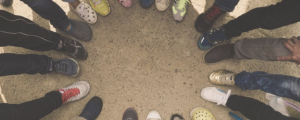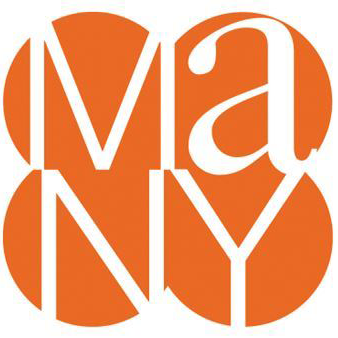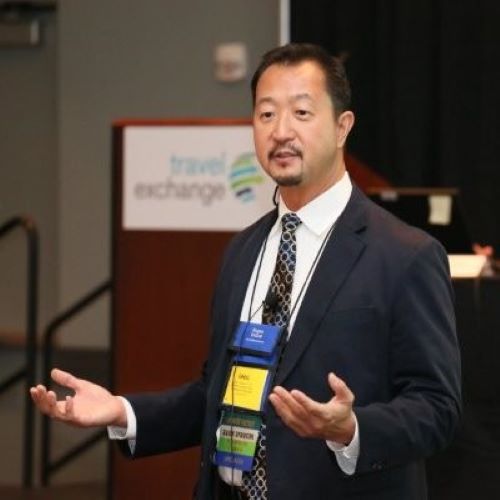2019 MANY Conference Series Episode 4
Episode 131
We recently attended the 2019 Museum Association of New York annual conference and spoke with attendees from all over New York State representing all types of museums and cultural institutions. I talked with folks from 21 different museums and cultural institutions about how they are creating inclusive environments, attracting new audiences and fitting within the tourism fabric of their community. We used these great insights to create another Museum Series (see last year’s series here) with five episodes filled with knowledge. Through this series, I hope you will find a new perspective on this important segment of the tourism industry.

In this episode, I share my conversations with:
- Julia Fell, Assistant Curator of The Museum at Bethel Woods
- Natalie Shoemaker, Marketing and Events Coordinator of the Roberson Museum and Science Center
- Jessica Moquin, Executive Director of the Chenango County Historical Society and Museum
- Anastasia Garceau, Director of the Waterford Historical Museum and Cultural Center
What You Will Learn in This Episode:
- How The Museum at Bethel Woods works to preserve and showcase the history of the 1960s, leading up to 1969
- Woodstock Music and Art Fair that took place at the historic site where the museum is now located
- How an innovative “pay it forward” program is promoting inclusivity by allowing visitors who are financially struggling to still be able to visit the Roberson Museum and Science Center
- How the Chenango County Historical Society and Museum is intentionally developing partnerships with the Bundy Museum and the National Abolition Hall of Fame and Museum to help promote inclusivity in a region not known for its ethnic diversity
- How the Waterford Historical Museum and Cultural Center is promoting inclusivity by partnering with The Arc of Rensselaer County to showcase the work of artists with mental and physical disabilities
The Museum at Bethel Woods
Julia Fell shares the important mission of The Museum at Bethel Woods as a part of the Bethel Woods Center for the Arts, located in Solomon County, New York. She discusses its role in the preservation of the history of the 1960s, culminating in the Woodstock festival that took place in 1969 on the historic grounds where the museum now stands, and she talks about the upcoming 50th anniversary of the Woodstock festival in August 2019. She discusses the efforts Bethel Woods and the museum are making to promote inclusivity through a variety of programming that targets many diverse audiences, she highlights their efforts to meet ADA accessibility standards, and she shares efforts to attract new young audiences. Julia discusses a series of oral history videos highlighting what life was like in the 1960s for young people of the day, contrasted with what life is like for today’s youth. She shares how the museum serves as a primary driver and important economic engine for the local community. She discusses the upcoming 50th anniversary of Woodstock and the boom in interest it is bringing to the museum.
Roberson Museum and Science Center
Natalie Shoemaker explains how the historic Roberson home serves as both the location for and the centerpiece of the Roberson Museum and Science Center located in Binghamton, New York. She discusses efforts to promote inclusivity at the museum including installing non-binary bathrooms and the use of inclusive pronouns. She shares how she wrote up an exhibition about a series of art pieces created by people with mental illness, and she shares the important lesson she learned when she inadvertently used a non-inclusive word in the write-up. She discusses the importance of continual growth and evolution in the area of inclusivity. She talks about the economic depression that is common in the area, and she discusses a “pay it forward” donation program to increase access to struggling community members. She shares efforts to attract new audiences to the museum. She gives information on social media outreach work she and the museum are doing to promote their exhibits. She shares how the museum fits into the local cultural fabric and discusses future opportunities to work with college students and older community members.
Chenango County Historical Society & Museum
Jessica Moquin describes efforts the Chenango County Historical Society and Museum are making to promote inclusivity, despite being located in a region not known for ethnic diversity, through intentional partnerships with other organizations such as the Bundy Museum and the National Abolition Hall of Fame and Museum. She shares how the museum is working to attract new audiences including a structural redesign of their main gallery and hallway lobby, as well as sharing stories about the region and the lasting impact it has made beyond its own borders. She discusses how her museum is one of four in the area, and she shares how the four museums are collaborating to develop an officially designated museum district to promote each other and attract new audiences. She shares future growth opportunities she recognizes for the museum and its more than 40,000 artifacts, eight-structure campus, and almost one hundred active volunteers.
Waterford Historical Museum and Cultural Center
Anastasia Garceau discusses the variety of historical and educational purposes the Waterford Historical Museum and Cultural Center in Waterford, New York serves in an effort to preserve and promote local history and heritage. She highlights the diverse backgrounds and perspectives the museum’s volunteers bring to its efforts, and she shares partnerships with groups like The Arc of Rensselaer County, a community-based organization advocating for and serving people with mental and physical disabilities. Anastasia talks about her efforts to create engaging programs covering a broad spectrum of interests that will attract a diverse audience of visitors. She shares how Waterford is a great tourism location with many different and diverse destinations to appeal to travelers, and she shares how this directly benefits the museum and allows to serve as a central location connecting these sites. She discusses how the museum is always looking for growth opportunities and ways to expand their existing programming.
Overview
Each of these organizations is truly committed to tackling inclusivity issues in their own unique and innovative way. From the Roberson Museum and Science Center’s use of non-gendered pronouns and offering of non-binary restroom facilities, to the Waterford Historical Museum and Cultural Center’s partnership to highlight the artistic contributions of mentally and physically disabled artists, each of these museums has found a remarkable and stand-out way to promote inclusivity, attract diverse new audiences, and further integrate their work with other tourism and cultural efforts of their communities.
Resources:
- The Museum at Bethel Woods website: www.bethelwoodscenter.org/the-museum/
- Roberson Museum & Science Center website: www.roberson.org
- Chenango County Historical Society & Museum website: www.chenangohistorical.org
- Waterford Historical Museum & Cultural Center website: https://waterfordmuseum.com
We value your thoughts and feedback and would love to hear from you. Leave us a review on your favorite streaming platform to let us know what you want to hear more of. Here is a quick tutorial on how to leave us a rating and review on iTunes!







